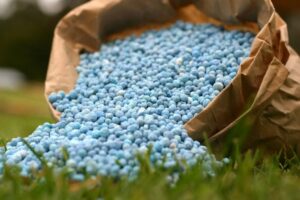
The plants of Ostchem nitrogen holding, which unites Group DF’s nitrogen business, produced 1.57 million tons of mineral fertilizers in 9M2023, up 92% year-on-year, Group DF said in a press release on Tuesday.
“At the same time, we have not yet managed to reach the pre-war level: the utilization of the main capacities of the plants did not exceed 70-80% during the year. The reason for the underutilization is a critical increase in fertilizer imports to Ukraine,” said Sergey Pavlyuchuk, Head of Ostchem’s nitrogen business.
According to him, the production plans for January-September were fully met, and the plants’ capacities were loaded more evenly than last year. During the reporting period, Cherkasy Azot increased production by 148% year-on-year to 1.22 million tons, while Rivne Azot increased production by 7% to 347.3 thousand tons.
According to the company’s release, urea (up 3 times), UAN (up 2.5 times) and ammonium nitrate (up 89%) were the most dynamic in terms of production. At the same time, production of UAN decreased by 72% to 36.9 thousand tons.
“Our plants operated smoothly and fulfilled contracts with Ukrainian farmers on time. In the future, the utilization of our plants will depend on the demand for mineral fertilizers. We are ready for the peak demand in November-December and the start of procurement for the spring planting season in 2024,” emphasized Pavliuchuk.
Ostchem cited high consumer activity in the spring and summer of 2023, when mineral fertilizers were more affordable, as one of the main factors influencing the mineral fertilizer market in Ukraine, which satisfied a significant part of consumer demand.
At the same time, according to the leading fertilizer producer, the market is experiencing a decline in the purchasing power of farmers due to the suspension of the grain deal and low prices for agricultural products amid a sharp increase in imports from countries friendly to Russia.
“The volume of imports is growing, which hurts the domestic chemical industry. In the third quarter of 2023, the increase in imports of mineral fertilizers was 46.6%. Since the beginning of the year, the total volume of fertilizers imported to Ukraine amounted to 1.71 million tons. This means that imports exceed domestic production. Fertilizers continue to be imported from countries that are “friendly” to Russia – repackaged Belarusian fertilizers are brought to Ukraine via Poland and Romania. Imports of urea from Turkmenistan are growing at a critical pace,” said Oleg Arestarkhov, Director of Corporate Communications at Group DF, as quoted by the holding’s press service.
He emphasized that often the selling price of fertilizers from post-Soviet countries, including logistics costs, “contradicts all market laws.” “There is reason to believe that fake certificates of origin for fertilizers from Russia and Belarus are entering Ukraine,” the top manager added.
In addition, Group DF pointed out that Ukrainian producers are losing the urea market. The company cited data from Derzhzovnishinform and the State Customs Service of Ukraine, according to which 22.7 thousand tons of urea were imported from Turkmenistan in 2021, 55 thousand tons in 2022, and 230 thousand tons in 9 months of 2023.
“In two years, the volume of urea imported from Turkmenistan has increased almost 12 times. At the same time, the largest Ukrainian chemical companies producing urea have been idle for two years. This shows the quality of the industrial policy, which needs to be urgently adjusted to stimulate production growth,” explains Arestarkhov.
Group DF consolidates Dmitry Firtash’s assets in the gas distribution, chemical, titanium and port industries, as well as in agriculture and media.
Ostchem is Group DF’s nitrogen holding company that unites the largest mineral fertilizer producers in Ukraine. It includes Rivne Azot, Cherkasy Azot, as well as Sievierodonetsk Azot and Stirol, which are not operating and are located in the occupied territories.